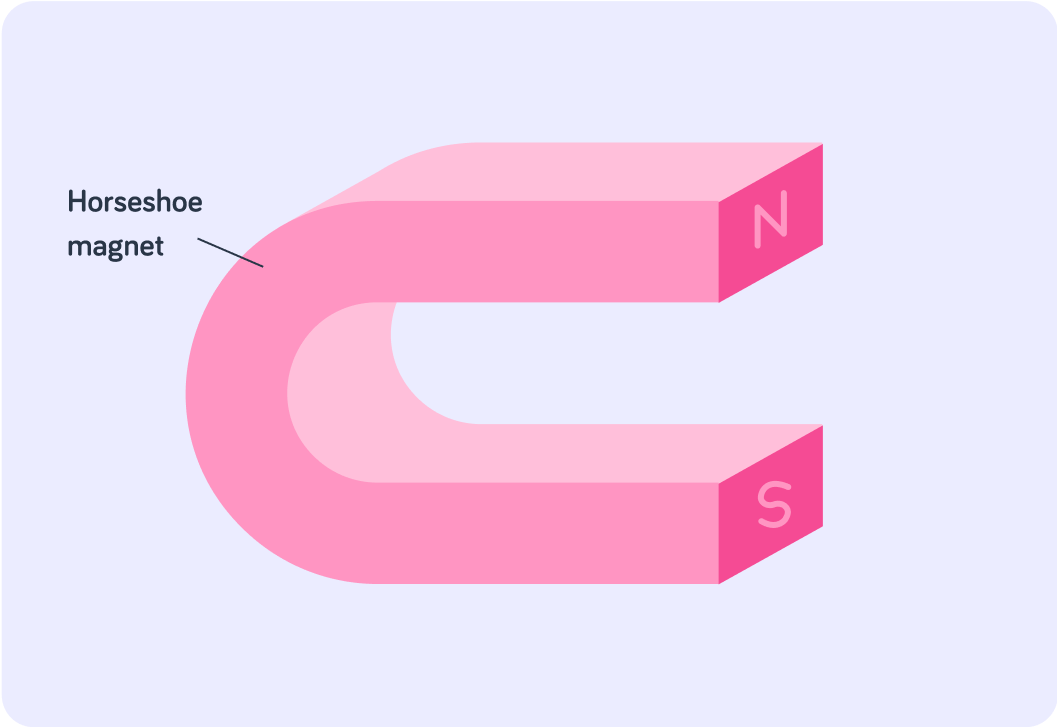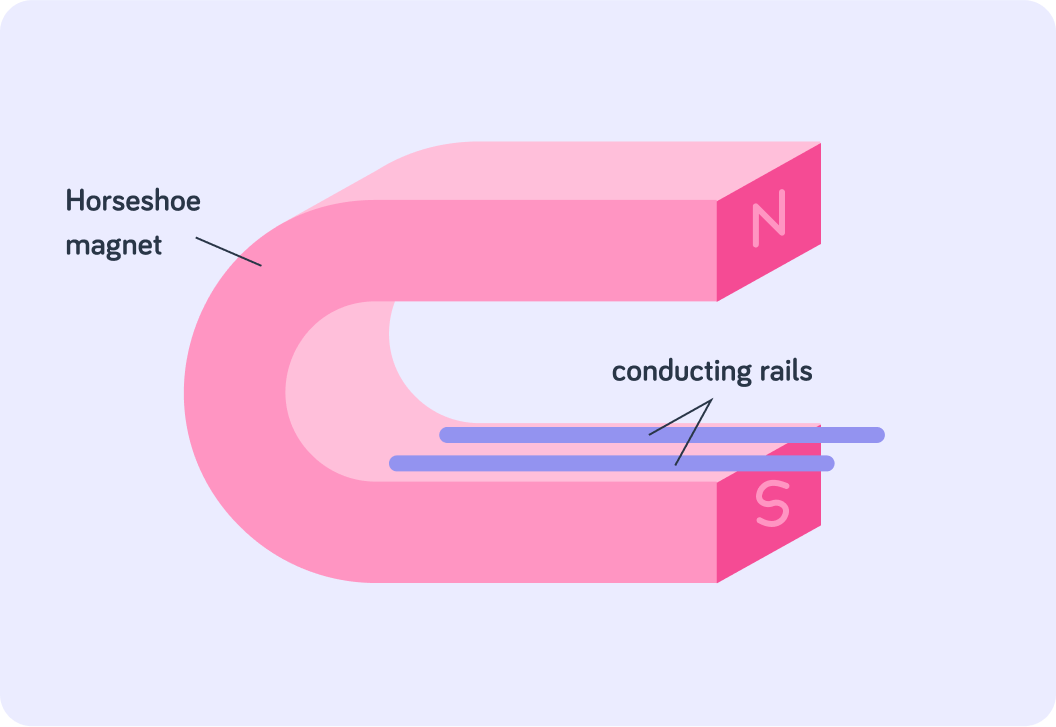YOU ARE LEARNING:
Force on a Conductor

Force on a Conductor
When a current-carrying conductor is placed in a magnetic field, it will experience a force due to the motor effect.
What type of material is used in a current carrying wire?

When an electric current flows through a wire, it creates a ...

If you place a current carrying wire in a magnetic field, will the two magnetic fields interact with each other?

What effect will a magnetic field around a conductor and a magnetic field of a magnet always have on each other?

A current carrying conductor (for example an electrical wire) generates its own magnetic field. If this enters another magnetic field, the two fields will interact with each other. This causes the conductor to exert a force on the magnet, and vice versa.
This is called the motor effect. Sometimes, it is strong enough to make the conductor move!
This image shows the motor effect on a conducting wire in a magnetic field. It is caused by the magnetic field around the wire interacting with the magnetic field of the magnets.
You can see that there is a force is acting on the wire.

At which angle is the force in relation to the magnetic field lines and the current carrying wire?


The maximum force occurs when the wire is perpendicular to the magnetic field of the magnets. Will the conductor experience any force if it is parallel to the magnetic field?


If the conductor is perpendicular to the magnetic field it will experience the full force, but if it runs parallel to the magnetic field, the force and the current will act in the same direction.
Anywhere in between, it will experience some degree of force. The closer to 90 degrees, the greater the force. The closer to 0 degrees (parallel), the smaller the force.

This image shows a horseshoe magnet.
There is a magnetic field inside the magnet between the two magnetic poles.

Say we place a set of metal rails in a horseshoe magnet and run a current through it. Will the circuit be complete?


If we add a bar across the rails, this will complete the circuit allowing current to flow through the bar. What will happen to the bar, given that this circuit is in a magnetic field?
A) The bar will experience a force that sticks it to the rails. B) The bar will experience a force that makes it move. C) The bar will not experience any force.


When the circuit is complete, and the current flows, the rails and the bar will generate a magnetic field.
This will interact with the magnetic field of the horseshoe magnet, causing the bar to roll in the direction of the force.

If we increase the strength of the magnet, what effect will this have on the strength of the magnetic field?

If you pass more current through the conductor, what effect will this have on the force experienced by the conductor and the magnet?

If we increase the strength of the magnet or the amount of current flowing through the conductor, it will increase the strength of the magnetic fields that are interacting.
This will thus increase the force on the wire, i.e. the motor effect.

